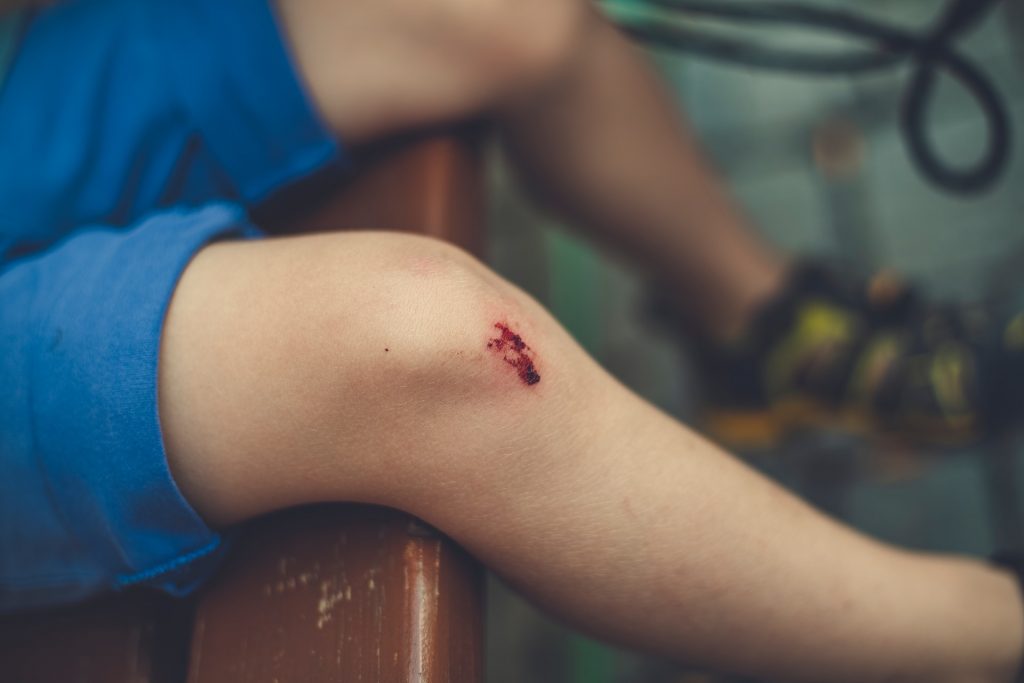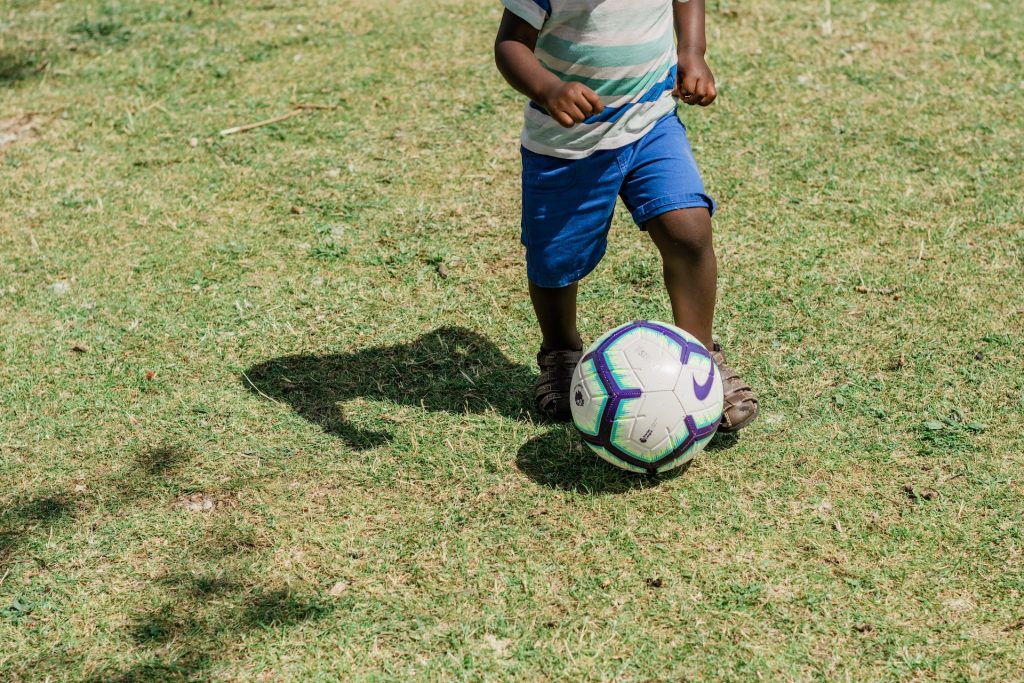
As parents, there’s nothing more distressing than witnessing our children in pain. Knee and leg pain in children is a common concern that requires careful attention and understanding. This comprehensive blog post aims to delve deeper into the potential causes of knee and leg pain in children and provide actionable steps parents can take to support their child’s well-being.
Possible Causes of Knee and Leg Pain in Children
Growth-related Pain
One of the most frequent causes of knee and leg pain in children is growing pains. As children undergo rapid growth spurts, their bones, and muscles may temporarily become imbalanced, leading to discomfort in their lower limbs. In most cases growing pains in children are harmless, but it’s essential to consult a pediatrician to rule out any other underlying issues that might require intervention. They may also refer the child to a physical therapist for specialized treatments and exercises.
Injuries and Trauma
Active children are prone to injuries and accidents that can cause knee and leg pain. Engaging in sports, playtime, or adventurous activities may lead to sprains, strains, or even fractures. The young age and growing bodies of children contribute to their resilience, but prompt medical attention and adequate rest are vital to ensure a speedy recovery and prevent long-term consequences.
Overuse and Repetitive Strain
Children who participate in competitive sports or activities involving repetitive movements may develop overuse injuries in their knees and legs. Conditions like Osgood-Schlatter disease or patellar tendinitis can occur due to excessive strain on specific areas. To prevent such injuries, parents should encourage their children to take regular breaks, practice proper warm-up routines, and ensure they have sufficient rest periods between intense activities.
Medical Conditions
Knee and leg pain in children can also be linked to underlying medical conditions. Juvenile arthritis, for instance, is an autoimmune disease that causes inflammation in the joints and can lead to discomfort and stiffness in the knees and legs. Identifying these medical conditions early is crucial for effective management and minimizing any potential long-term effects on their mobility.
Infections
Infections such as Lyme disease can manifest as knee and leg pain in children. If your child experiences pain accompanied by symptoms like fever, rash, or fatigue, seeking immediate medical attention is imperative to address the underlying cause and prevent further complications.
When to Seek Medical Help
While some knee and leg pain can be managed at home, it’s essential to recognize the warning signs that require immediate medical attention. If your child experiences:
- Intense or worsening pain that doesn’t improve with rest
- Swelling, redness, or warmth around the affected area
- Difficulty bearing weight on the leg
- Limited range of motion in the knee or leg
- Nighttime pain interfering with sleep
Don’t hesitate to consult a pediatrician promptly. Early intervention can prevent potential complications and ensure the best possible outcome for your child’s health.
Tips for Managing Knee and Leg Pain at Home
Rest and Ice: Encourage your child to rest the affected leg and apply ice wrapped in a cloth to the area for 15-20 minutes every 2-3 hours. This helps reduce inflammation and relieve pain. Ensure they avoid any strenuous activities that may exacerbate the pain.
Pain Relief: Over-the-counter pain medications appropriate for children, such as acetaminophen or ibuprofen, can provide temporary relief from discomfort. Always follow the dosing instructions and consult a healthcare professional if you have any doubts or concerns.
Gentle Stretching: Light stretching exercises can help improve flexibility and alleviate muscle tightness. Encourage your child to perform gentle stretches for the quadriceps, hamstrings, and calf muscles. However, it’s crucial to avoid forcing movements that cause pain or discomfort, as this may worsen the condition.
Supportive Footwear: Ensure your child wears well-fitted, supportive shoes suitable for their activities. Proper footwear plays a significant role in providing adequate support to the feet, which can, in turn, reduce strain on the knees and legs during physical activities.
Warm Baths: Warm baths with Epsom salts can relax muscles and ease discomfort. You can also encourage your child to do simple range-of-motion exercises in the water, which can be gentle on their joints while offering therapeutic benefits.
Preventing Knee and Leg Pain in Children
Prevention is always better than cure, and taking proactive measures to reduce the risk of knee and leg pain in children can have a significant impact on their overall health and well-being. Here are some effective preventive strategies:
Encourage Proper Technique: If your child participates in sports or physical activities, ensure they learn and practice correct techniques under the guidance of qualified coaches or instructors. Proper form and posture can significantly reduce the risk of injuries and strain on the knees and legs.
Balanced Physical Activity: Encourage a variety of physical activities that engage different muscle groups. Mix high-impact activities like running or jumping with low-impact ones like swimming or cycling. This approach helps to distribute the load on the joints more evenly and reduces the likelihood of overuse injuries.
Warm-up and Cool-down: Emphasize the importance of warming up before engaging in any physical activity and cooling down afterward. A dynamic warm-up prepares the muscles for the activity ahead, while a cool-down allows the body to gradually return to its resting state and prevents muscle stiffness.
Maintain a Healthy Weight: Excess weight can put additional stress on the knees and legs, potentially exacerbating existing pain or leading to new discomfort. Encourage a balanced diet and regular physical activity to help your child maintain a healthy weight and promote overall wellness.
Regular Check-ups: Schedule regular wellness visits with a pediatrician to monitor your child’s growth and development. These visits offer an opportunity to address any concerns, assess the child’s musculoskeletal health, and ensure that they are meeting developmental milestones appropriately.

Knee and leg pain in children can be distressing for both the child and the parents, but with the right knowledge and proactive approach, parents can effectively manage and prevent such issues. As caretakers, it’s essential to stay vigilant and attentive to your child’s needs. When in doubt, always seek the advice of a healthcare professional. By promoting a healthy lifestyle, balanced physical activity, and early intervention when needed, parents can play a pivotal role in ensuring their child’s well-being and active lifestyle. By implementing these strategies and fostering a supportive environment, parents can empower their children to lead a life filled with joy, exploration, and physical vitality. Remember, every child is unique, and addressing knee and leg pain requires individualized care and attention. Your dedication and efforts as a parent can make a profound difference in your child’s journey toward a healthy and pain-free life.
Recent Posts
The Role of Senior Living Placement Services in Enhancing Quality of Life for Seniors
How can seniors find the best place to live as they get older? Choosing the right place is important for their health and happiness - senior living placement services help by finding the perfect...
Understanding the Concept of a Gift from God: A Spiritual Exploration
When we think about gifts, we often picture tangible items wrapped nicely in colorful paper. But a gift from God is different. It isn't something you can hold or touch. Instead, it's something...
